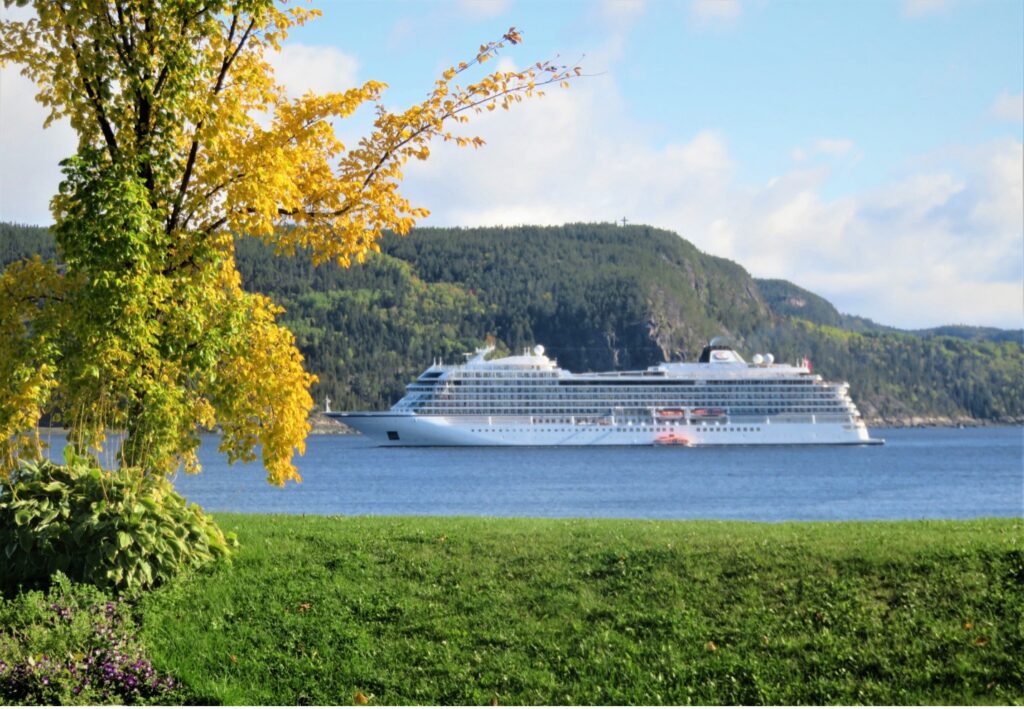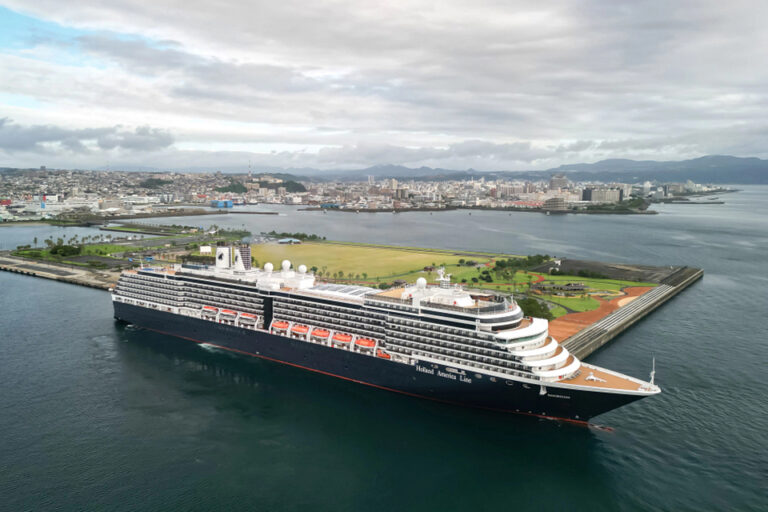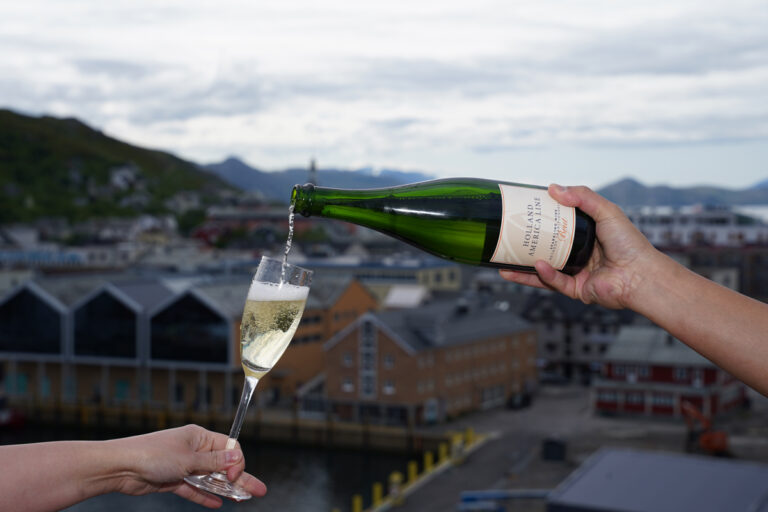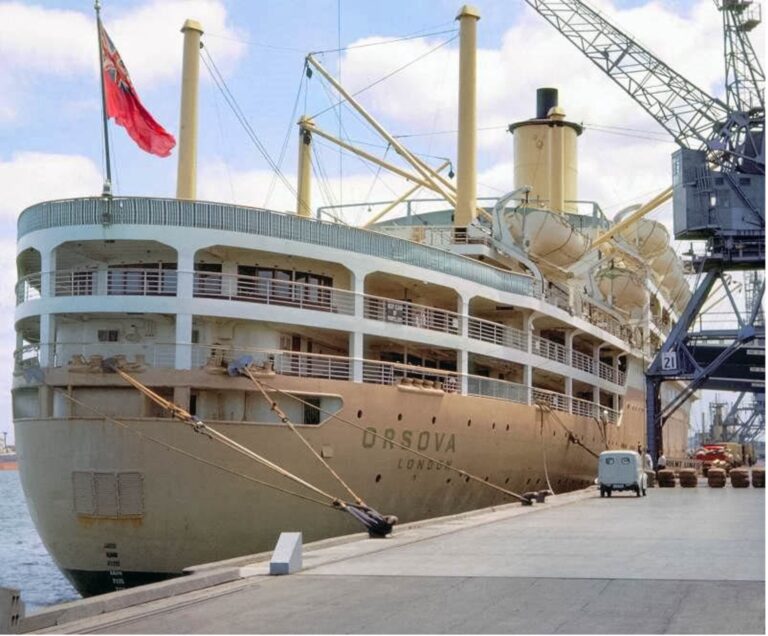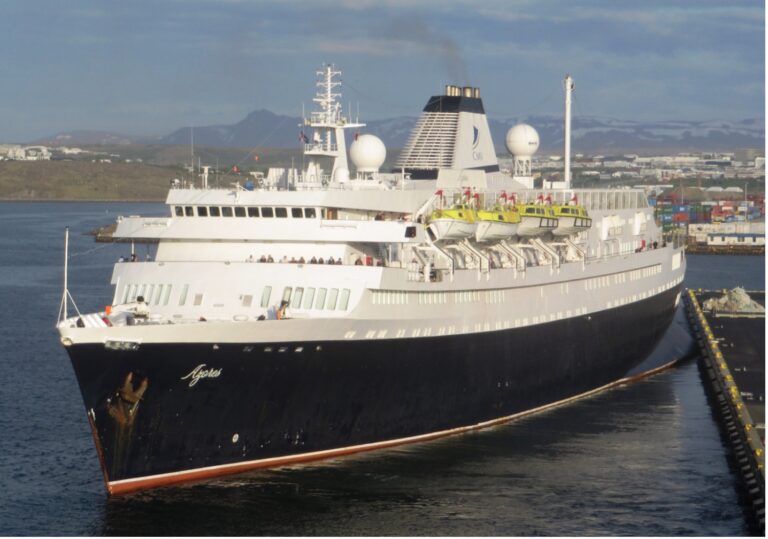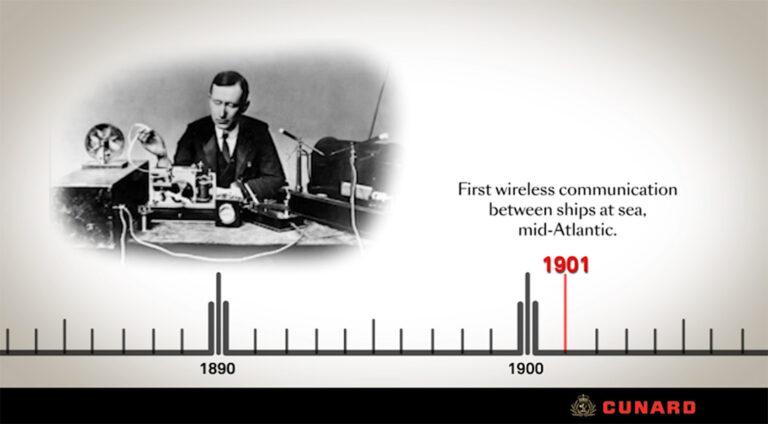Holland America’s ‘Big Three,’ Historic Liners, and Seafaring Tales
The Big Three
Holland America Line and its wonderful ships are a great favorite. They were, after all, virtually in my backyard until 1963 and then moving eastward across the Hudson to brand-new Pier 40 in Manhattan’s Greenwich Village. The Line (De Lijn), the nostalgic association of retirees and fans of the company, have joined forces and created a splendid exhibition “The Big Three”. Until the mid-60s and from April to October, Holland America had a sailing every Friday at noon for Europe – to Southampton, Le Havre & Rotterdam. The 3-week rotation involved the Rotterdam, Nieuw Amsterdam and Statendam. Then they were the Company’s largest as well as finest liners.
Our good friend Jan Willem Goudriaan attended the opening, held in the La Fontaine Dining Room aboard the preserved Rotterdam, moored permanently in her [Dutch] homeport waters. So very kindly, he shared the photos below:
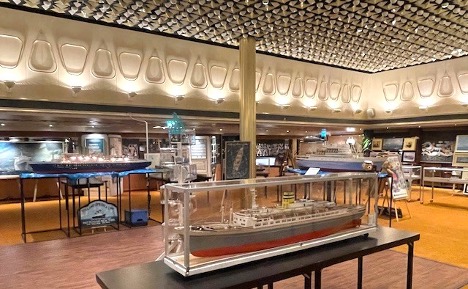
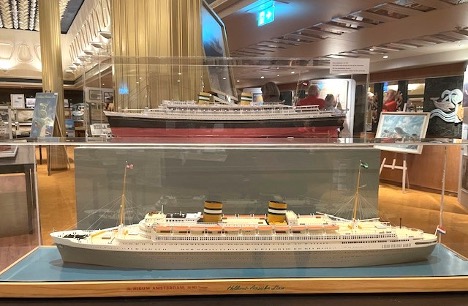
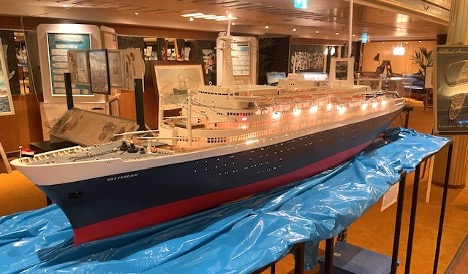
Maritime Link
The famed Swedish liner Stockholm later (in 1960) became the East German “workers’” cruise ship Volkerfreundschaft (and still later a string of other names) before recently being sold to Belgian scrap merchants. Checking through a bookcase recently, I found this hardcover devoted to East Germany’s cruise ship fleet. I discovered the former Stockholm made the cover.
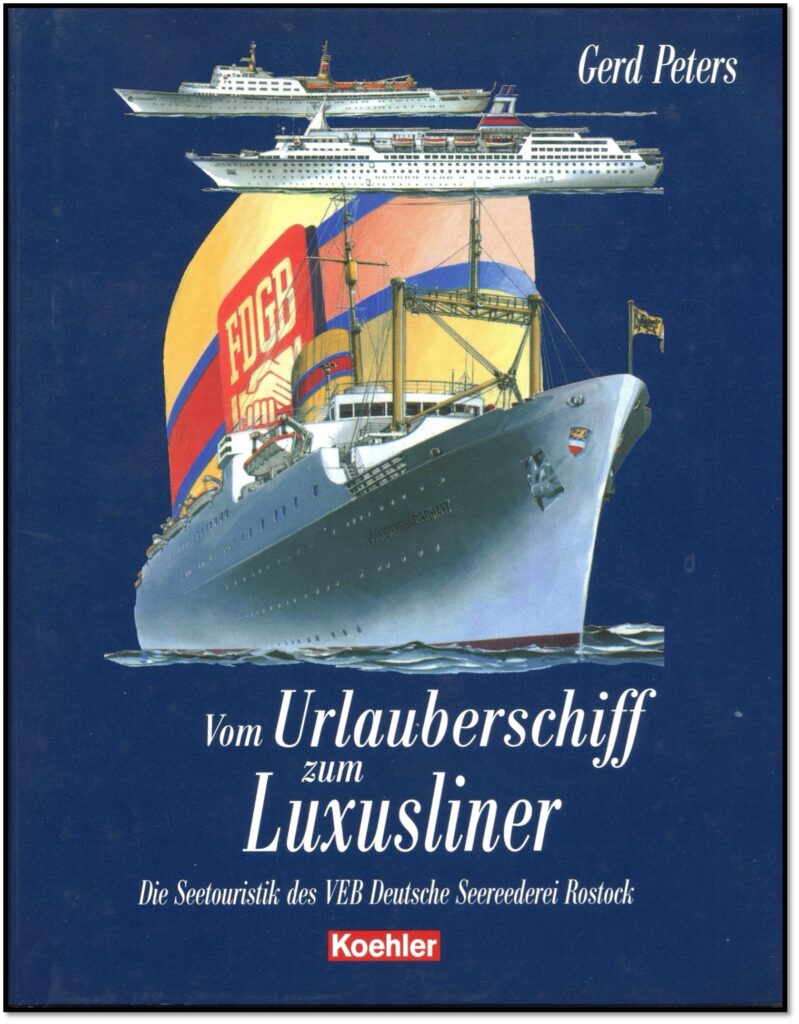
The Stockholm is of course immortal from its tragic collision with the Andrea Doria.
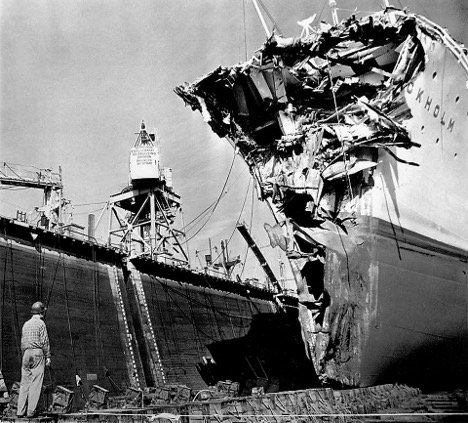
Years later, we caught the former Stockholm, then renamed simply Volker and for sale, idle at Southampton in July 1986.
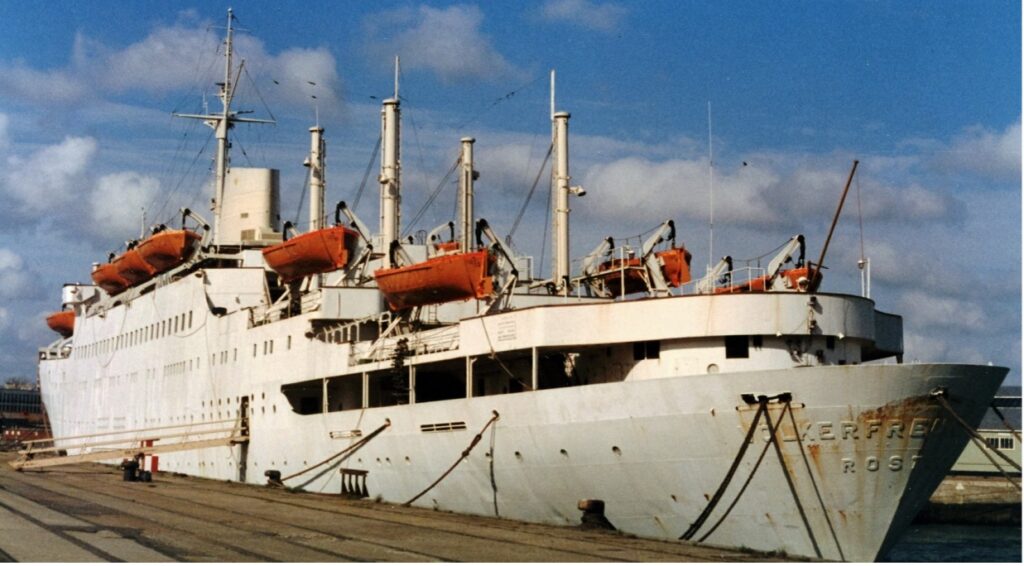
Belgian Trio
I’ve always been fascinated by combo ships – that’s for combination passenger and cargo ships. Usually, they carried under 400 passengers, but mostly under 200 and usually in very comfortable, all first class quarters. In a recent edition of the very fine Ships Monthly, a trio of combo ships was featured – Belgian Line’s Copacabana, Piriapolis and Mar Del Plata.
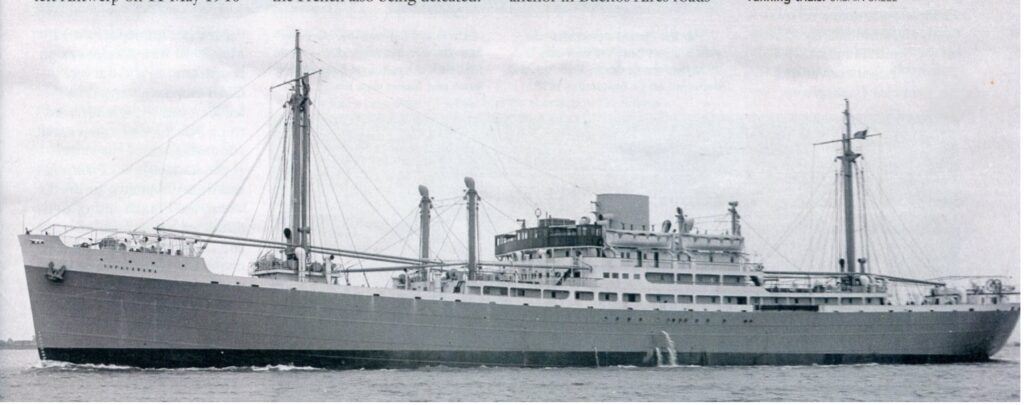
Built back in 1937-38, they were purposely created for South American service – from Antwerp to Pernambuco, Rio de Janeiro, Santos, Montevideo and Buenos Aires. Antwerp to Pernambuco took 12 days if you’re interested. At little more than 7,300 tons, they were actually two class – 20 in first class, 120 in tourist. Only the Copacabana and Mar Del Plata survived World War II, served their Belgian owners until the late Fifties and then went to sail as merchant training ships for the East German Government.
The article on this Belgian trio reminded me of the fine poster art by the Belgian Line, the Compagnie Maritime Belge, but mostly for their colonial trade to West Africa, to the Congo.
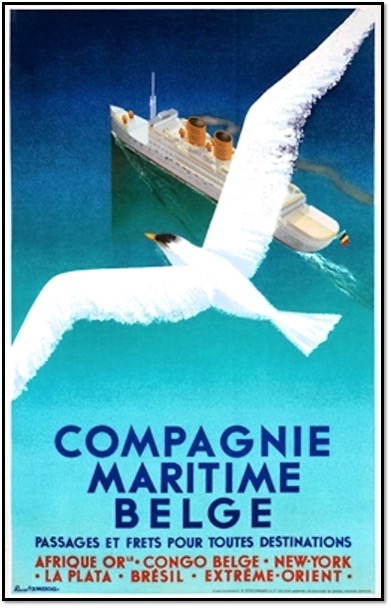
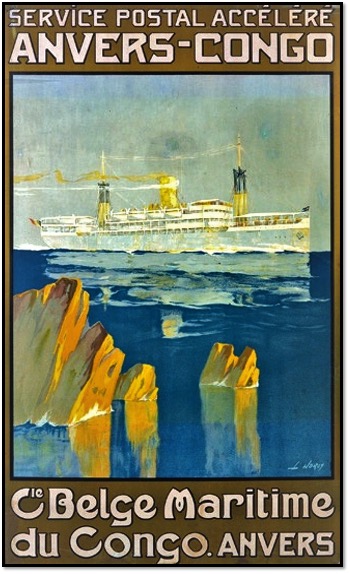
Vintage poster art from Compagnie Maritime Belge promotes Belgian Line’s services to Africa, South America, and the Congo. From the William H. Miller collection.
Missing Funnel
Ken Mika shared this view (on August 6) of the spot where the forward funnel of the liner United States once stood.
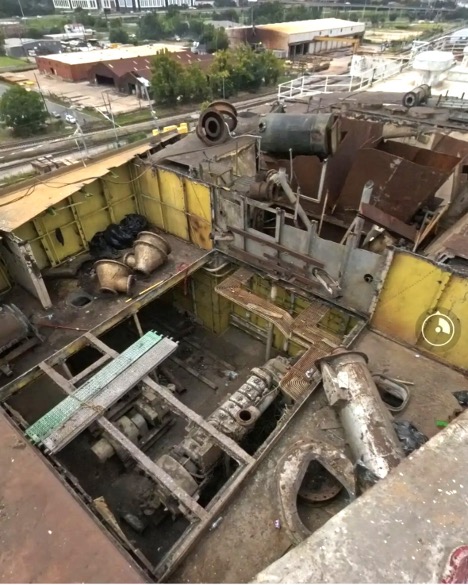
Order & Formation
I have over 1,000 1250 scale models in my collection. After moving and them being carefully packed and handled, they have happily returned to their cases and in groups by company/owners. Below is the post-war, 1950s passenger fleet of the long gone, London-based British India Steam Navigation Company Limited, “BI” for short.
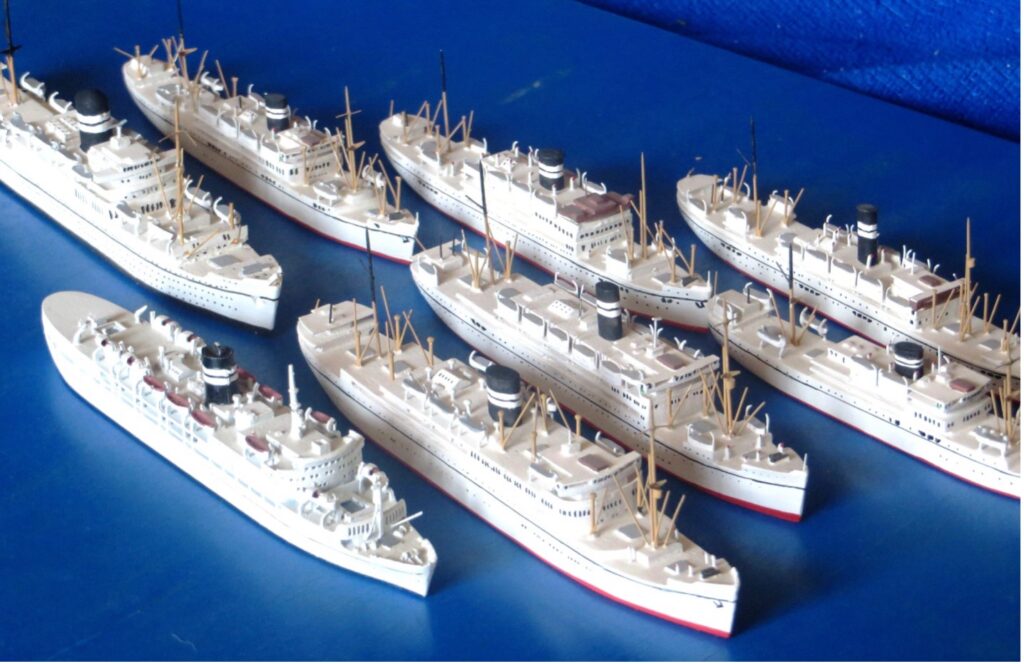
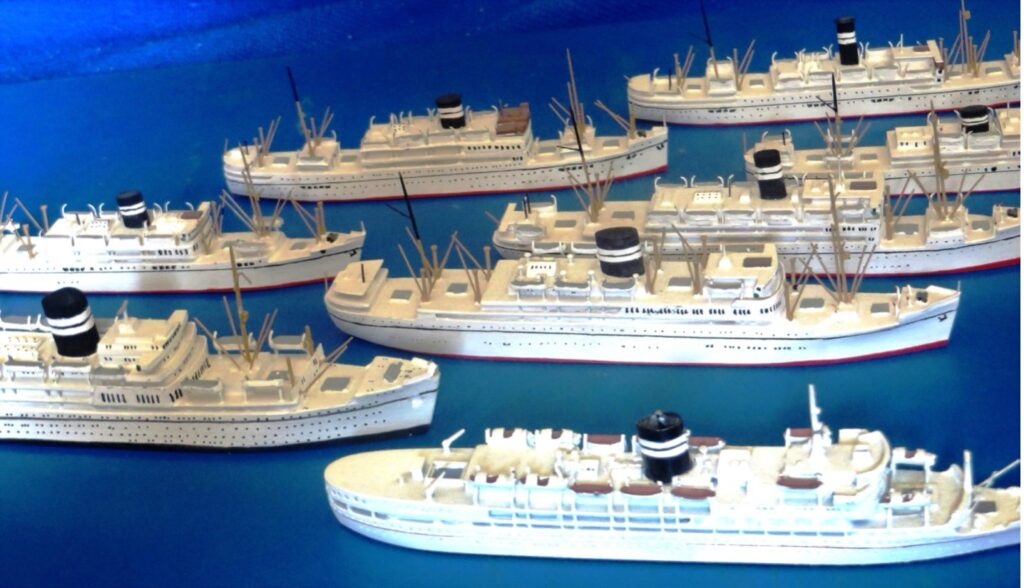
Postwar models of the British India Steam Navigation Company fleet, displayed from the William H. Miller collection.
A Little Post Card from Viking Mars: Quaint Saguenay on a Quiet Sunday Morning
A quiet Sunday morning here … peace, serenity, absolute stillness … autumn colors have begun – even dabs of bright orange … the church prepares for services as the winds outside are almost biting at times … laundry on long clotheslines blows dry … and some locals, it seems, speak only French…
